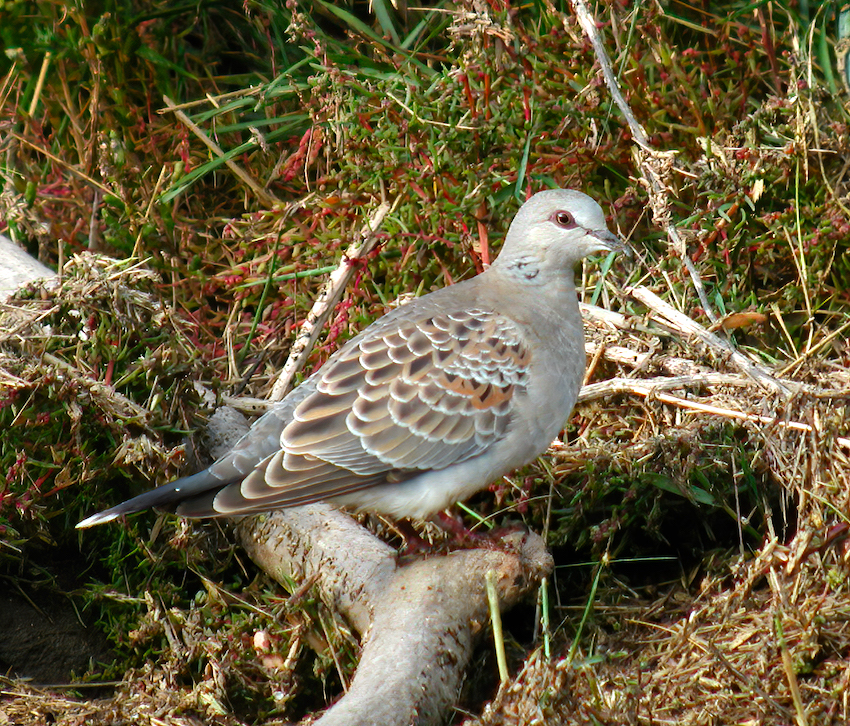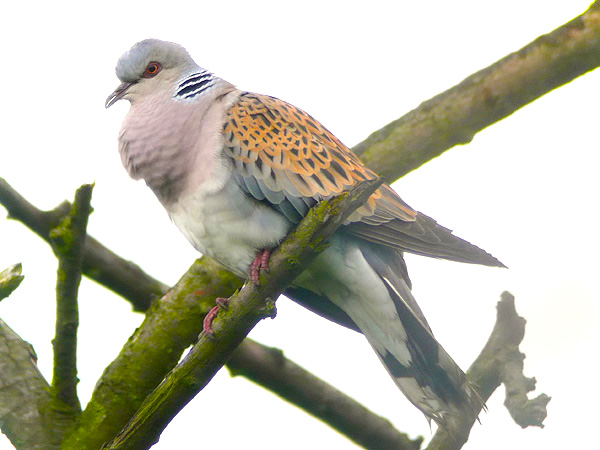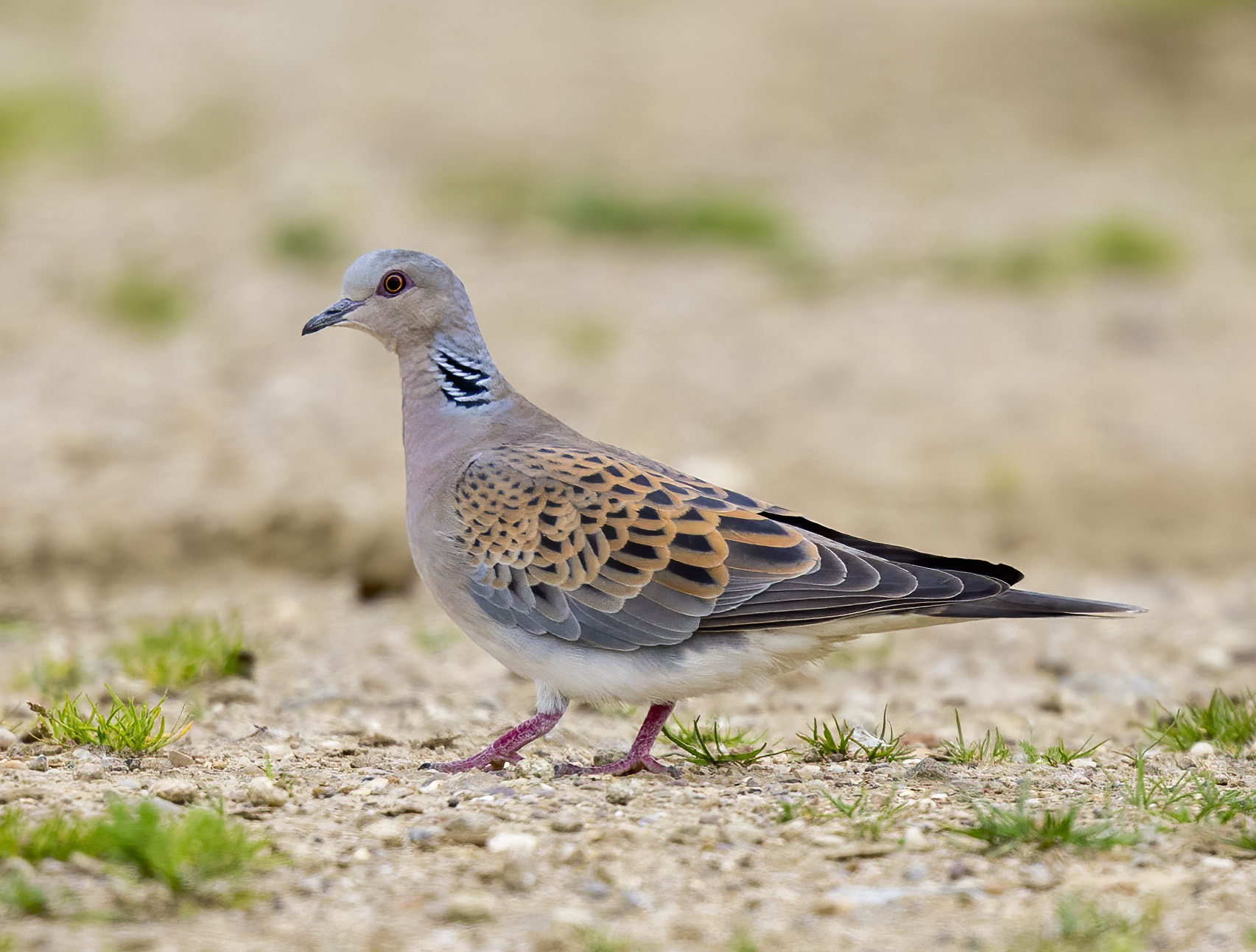Turtle Dove Streptopelia turtur
Common in the late 1980s now scarce and declining summer visitor and passage migrant. Added to the RBBP list from the 2018 season onwards)



This species was already declining when the Atlas estimated the Lincolnshire population at between 3,700 and 7,300 pairs in the late 1980s. The superb Atlas cover illustration of a pair of Turtle Doves by Neil Smith, superimposed on a map of their distribution at that time, is a telling indictment of the species destruction by agricultural intensification. The UK and county BBS indices show the catastrophic decline that has taken place from 1994 to 2019 earning Turtle Dove the title of Britain's fastest declining bird. Recognising this decline, the species was considered by the RBBP from 2018 onwards in which year in Lincolnshire there were a maximum of 37 breeding pairs reported. The decline is popularly attributed to the shooting of migrant birds in southern Europe in both spring and autumn. In the UK there is good evidence to support the hypothesis that the primary demographic driver of Turtle Dove declines is a shortened breeding period, which has reduced the number of nesting attempts. This is thought to be driven by reduced food availability due to increased herbicide use, although analyses that test this directly are lacking. Re-wilding at the Knepp Estate in Sussex, where the breeding population has surged, also suggests that increased agricultural intensification, eliminating the “weed” seeds on which Turtle Doves feed their young is the more likely culprit. The RSPB is working with farmers in East Anglia to introduce seed mixes which may stem and hopefully start to reverse the decline. Urgent action is definitely required if the Lincolnshire population is to be saved.
(Account as per new Birds of Lincolnshire (2021), included September 2022)
